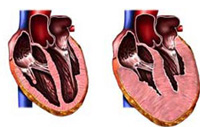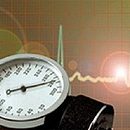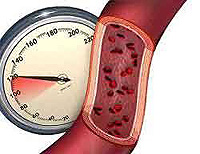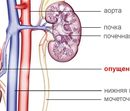Cardiomyopathy is the disease of the heart muscle (myocardium), which are accompanied by various heartfelt impairment. With dilatation cardiomyopathy, a violation of the pump function.
Content
Determination of dilatation cardiomyopathy
Dilatification (stagnant) Cardiomyopathy (DCMP) - disease of the heart muscle, in which a violation of the pump function of the heart comes to the foreground with the development of chronic heart failure. This is one of the most common cardiomyopathies. The most characteristic feature of the disease is dilatation (from the Latin word Dilatatio - expansion, stretching) of the heart chambers, mainly its left ventricle. DKMP is also called a stagnant due to the inability of the heart with a given disease to fully pump blood, as a result of which this blood «Store» in organism organs and tissues.
Causes of the disease
Primary dilatation cardiomyopathy is rare. The development of secondary dilatation cardiomyopathy can be facilitated:
- Hereditary factors (transfer by inheritance vulnerable to the effects of toxins and myocardial infections)
- Infectious damage to the heart muscle (viruses, bacteria, etc.)
- Toxic effects (alcohol, cocaine, intoxication by some metals, as well as drugs used in oncology for chemotherapy)
- Vitamin failure (mainly vitamins group B)
- Diseases of endocrine glands (thyroid, pituitary glands, adrenal glands
- Certain cases of pregnancy (the occurrence of dilatation cardiomyopathy in the last month of pregnancy or within 5 months after delivery)
- So-called systemic diseases of the connective tissue (system red lupus, sclerodermia, polyarteritis, etc.)
- Resistant violations of the heart rhythm (arrhythmias) with high heart rate capable of calling so-called tachycardiomyopathy
The fact is that the high frequency of heart abbreviations interfere with the normal blood flow of the heart chambers, reducing its pumping function and the depletion of energy reserves of the cord muscle cells. In the absence of treatment of tachycardiomyopathy, they contribute to the occurrence of heart failure, but their manifestations are eliminated for a short time after the restoration of normal heart rhythm.
Mechanisms for the development of dilatation cardiomyopathy
The disease is the death of individual cells in various sections of the heart muscle. In some cases, this death is preceded by inflammation of the heart muscle (myocarditis), most often virus nature. The cordious muscles affected by the virus become alien for the body, and the patient's immune system begins to destroy them. Gradually dead muscle cells are replaced by the so-called connective tissue that does not have the properties of extensibility and the contraction inherent myocardium. Similar changes in the heart muscle entail a decrease in the pump function. To compensate for the decrease in the pump function, the heart chambers expand (t.E. their dilatation occurs), and the remaining myocardia thickens and compacted (t.E. It develops its hypertrophy). The dimensions of individual heart cameras may increase several times. At the same time, there is a persistent increase in cardiac rhythm (sinus tachycardia), promoting an increase in oxygen delivery by organs and tissues of the body.
 For some time the pump function of the heart improves. However, the possibilities of dilatation and myocardial hypertrophy are limited to the number of viable myocardium, therefore, they are individual for each specific case of the disease. When the compensatory heart rate is dried, decompensation (loss of compensation) of its pumping function is associated with the development of chronic heart failure. At this stage, another compensatory mechanism comes into effect: the body's tissues begin to absorb a greater volume of oxygen from the blood than in a healthy body. But, unfortunately, the decrease in the pumping function of the heart entails the decrease in admission to the organs and tissues of oxygen necessary for their normal life, and the amount of carbon dioxide in them increases. The course of the disease impairs the emergence of lack of mitral and tricuspid heart valves due to the abstraction of their valve ring (analloratectation) against the background of the dilatation of the heart chambers.
For some time the pump function of the heart improves. However, the possibilities of dilatation and myocardial hypertrophy are limited to the number of viable myocardium, therefore, they are individual for each specific case of the disease. When the compensatory heart rate is dried, decompensation (loss of compensation) of its pumping function is associated with the development of chronic heart failure. At this stage, another compensatory mechanism comes into effect: the body's tissues begin to absorb a greater volume of oxygen from the blood than in a healthy body. But, unfortunately, the decrease in the pumping function of the heart entails the decrease in admission to the organs and tissues of oxygen necessary for their normal life, and the amount of carbon dioxide in them increases. The course of the disease impairs the emergence of lack of mitral and tricuspid heart valves due to the abstraction of their valve ring (analloratectation) against the background of the dilatation of the heart chambers.
In the later stages of dilatation cardiomyopathy, complex malignant arrhythmias may arise that can lead to sudden death. Due to the reduction of the pumping function of the heart, as well as as a result of the unevenness of the reduction in myocardium in the heart chambers, it becomes possible to form a thrombus. The danger of thrombosis is in the potential distribution of fragments of blood clots with blood flow (thromboembolism), which can contribute to the development of internal organs internal organs and blockage of large vessels.
Basic symptoms of the disease
The manifestations of the disease largely depend on which the heart chamber is involved in the pathological process. Perhaps the defeat of one or several cameras of the heart. In most cases, the prognosis of the disease is determined by the lesion of the left ventricle of the heart. It is the left ventricle, and not the heart as a whole, and is therefore «Pump» In general understanding. Prior to the onset of heart failure of dilatation cardiomyopathy proceeds asymptomatic. The most characteristic complaints of the coming heart failure are shortness of breath and fast fatigue. Initially, shortness of breath is observed during exercise (running, fast walking and t.D.), as the disease progresses, it arises alone. The appearance of complaints is due to a decrease in the pump function of the heart and, accordingly, the deficiency of the oxygen content in the body. Shortness of the patient's body as if trying to compensate for this deficit. Of the characteristic complaints, I also note the rapid heartbeat, which wears, as mentioned above, protective (compensatory) character. In the future cases of the disease, the symptoms of the so-called worldwood heart failure are joined: swelling of the legs, the increase in the stagnation of the liquid part of the liver (hepatomegaly) and the abdomen (ascites). In general, it can be noted that with the advent of complaints should be put a sign of equality between concepts of dilatation cardiomyopathy and heart failure.









